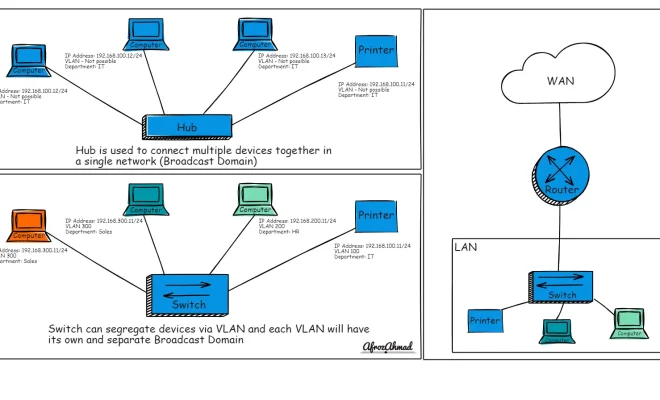Ethernet Switch vs. Hub: What Is the Difference?

Ethernet switches and hubs are two common networking devices that are used to connect different devices in a local area network (LAN). Although both Ethernet switches and hubs are used to connect devices, they have several differences in terms of functionality, performance, and security. Understanding the difference between the two is important when setting up a network in a home, office, or any other location.
Ethernet Hub
An Ethernet hub is a basic networking device that connects devices in a local area network. It works by broadcasting data packets that are received by all devices connected to the hub, irrespective of the intended recipient. This means that when a device sends a message to another device on the network, it sends it to the hub, which then broadcasts it to all devices on the network. As a result, multiple devices on the same hub can cause collisions, leading to slow network speeds.
Ethernet Switch
An Ethernet switch, on the other hand, is a more intelligent networking device that connects devices in a local area network. Unlike a hub, a switch forwards data packets only to the intended recipient, minimizing the possibility of collisions and improving network efficiency. Additionally, Ethernet switches are capable of filtering packets, meaning that they can block malicious traffic and protect against other security threats.
Advantages and Disadvantages
The primary advantage of Ethernet hubs is their simplicity and low cost. It is easy to plug in cables to a hub and get devices connected to the network. Hubs also have fewer points of failure compared to switches, making them more reliable. However, they are not capable of managing network traffic or providing any security measures, making them unsuitable for larger networks with high traffic.
Ethernet switches, on the other hand, provide better performance, security, and flexibility compared to hubs. They can identify the intended recipient of data packets, reducing network congestion and improving network speeds. Additionally, they can provide security features like filtering and access control to protect against cyberattacks. However, switches are more complex to set up and install compared to hubs, and they are more expensive.






